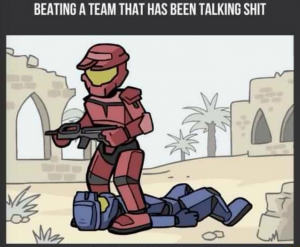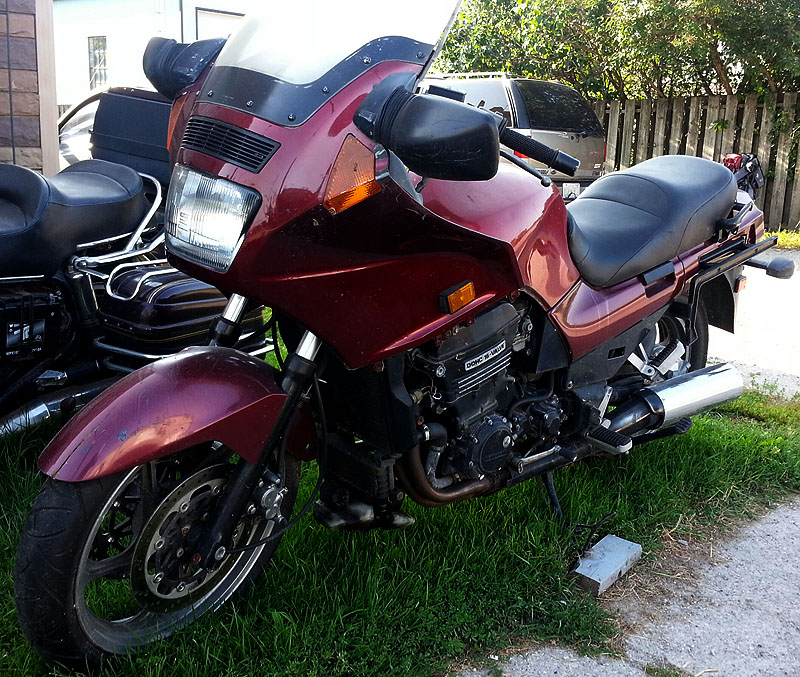The following is relevant to what’s happening in my board, but since there appears to be no central plan from a ‘ministry’ of education, every board is doing their own thing, so this might not apply to you. In my world the double-double is now an overwhelming truth that combines all the difficulties of remote learning with the challenges of providing face to face instruction in a medical emergency simultaneously all day every day. I have two classes like that so I’m prepping for two different lessons and instructing in two places at once (online and f2f) all day every day every week, no breaks.
I have some ideas on how to fix that:
I’m able to cover the basic hands on and theory learning in my face to face technology classes, but the more pedagogically complex work like developing an adaptive and agile engineering process by working out how to solve problems in non-linear, failure heavy learning situations simply isn’t happening in our drink-from-the-firehose quadmestered schedule. There is no time or the space you need in order to iterate past problems and internalize this deeper learning, and there is no time as a teacher to generate this prodigious amount of material. How could we make moves to fix that?
TIMETABLING SUGGESTION #1: NO MORE QUADMESTERS! A good old fashioned semester with one class each week has its own problems (like 3 weeks between each subject), but would also mean no more double/doubling because we’d never have an always on quadmester.
A weekend break between crossovers between subjects along with our current cleaning regimens (which seem to do a better job at stopping COVID19 than the general public) suggest that we could return to a semestered system safely. Rather than waiting months to take a breath, teachers would have a rotating prep each month where they could plan for the next onslaught. Senior students would have a breath too if they have a spare.
Double cohorts of simultaneous face to face and remote students mean teachers are producing learning content at high speed (a week of intensive class equals almost a month of regular class) while also having to produce online and face to face lessons. The marking obviously comes at an accelerated rate too. This is absurd. I wish we had a union. Breaking up the quadmester system back into semesters means everyone would cycle through all their classes every four weeks, and while there will be retention problems, there are anyway. At the very least getting semesters back would mean that students with spares would get to experience them and teachers would actually be given time to prep what they’re teaching. It also means that we’re not dragging kids through rapid fire quadmesters and they would have time to digest what’s coming at them. Best of all it means we’d never have to use the term ‘quadmester’ again.
***
The remote part is happening simultaneously and I’m supposed to be designing and running that too… while I’m teaching f2f at the same time. Parents are wondering why I’m not responding to questions online in a timely fashion while I’m teaching the other cohort in the classroom. In the meantime I’ve given a ‘remote learning support teacher’ to help me with that, except they’ve yet to be able to provide anyone who has the faintest clue what we’re doing in computer engineering.
I’m seeing make-work for teachers instead of them focusing on teaching, let’s stop that.
TIMETABLING SUGGESTION #2: CAP ALL SPECIALTY CLASSES THAT YOU CAN’T FIND A QUALIFIED TEACHER TO REMOTELY SUPPORT AT 20 AND MAKE THEM SINGLE COHORT CLASSES.
Rather than inventing make-work that has people making teacher salaries to babysit students online (no marking or any other responsibilities), let’s let subject specialists remotely support their own classes.
The myth is that we’re providing 2.5 hours of face to face instruction and 2.5 hours of remote instruction each day adding up to enough instructional time to equal a credit, but if we can’t provide a qualified, knowledgeable teacher to manage the learning then we’re not providing the instruction time the Ministry of Education claims is required to earn a credit. A split f2f/remote cohorted system does good things in reducing face to face class sizes (though when students are coming off buses with 38+ students on them you have to wonder how effective it is), but f2f/remote quadmesters are a shell game when it comes to actual instructional time.
I’ve got 15-20% of my grade 9s (the ones with IEPs who need support – but that’s been cancelled in school) not doing any remote learning at all. Since the remote learning support teachers aren’t qualified to speak to the material and don’t have any clearly defined responsibilities anyway, these kids are falling through the cracks. This academically driven rapid-fire quadmestered system is predicated on privilege and aimed at student success for the successful. Kids who struggle in the system are being run over by it (as usual).
We’ve been given ‘remote support teachers’ who are supposed to oversee the elearning half, but they’ve yet to provide me with one who is qualified in my subject area and both have said that they have no idea what we’re doing in class. I’m unable to put them as teachers in the Cisco Netacademy LMS because they aren’t qualified to teach it, which is kinda the point. Guess who gets all the content question emails? Except I’m kinda face to face all day too.
This could be fixed at next to no cost. Tech classes have smaller caps anyway, so setting them to the cohort limit (or changing the cohort limit to tech caps) wouldn’t change class sizes or displace students at all while ensuring that qualified teachers are teaching specialist subjects. Tech numbers have remained strong because they are hands-on classes that don’t translate to a remote learning platform well. In the spring we were told students can’t do any tech work at home even if they had the tools at home for liability reasons, so there is another reason to protect this specialized learning in face to face situations. Any class that focuses on tactile hands on learning should be prioritized in face to face classes. Those classes (tech, art, etc) shouldn’t be lumped in with academic classes that work online.
We’re frequently told this situation is flexing, but there doesn’t seem to be a lot of flexibility in planning once it’s in place. I only hope the people responsible for arranging the deck chairs on our ship aren’t nailing them into place, because they’re placed poorly.
***
I’m watching my grade 9s struggling to wrap up this overwhelming rapid fire quadmester now. I’m crawling to the end of the damned thing wondering how things have gone so wrong. In the first couple of weeks I didn’t know how I’d get to the end. It turns out the answer is: do less less well, which I’m not satisfied with. I’m not sure that the people running things who haven’t been in a classroom in the 21st Century are as frustrated by that as I am though.
The nines struggle to adapt to a semestered system when they end in January in normal scheduling. In this pandemic scheduled school year they are getting buried even while being overwhelmed emotionally by the limitations inflicted upon us by this virus. There was a lot of talk about mental health and care before we launched this waterboarding schedule. It’d be nice if that focus returned when people were thinking about how the second semester might go down in February.
If not a weekly/semestered schedule, how about a four day week with one day as a fully remote working day where teachers who are teaching their students rather than babysitting them could interact meaningfully with them in that online environment in real time (hard to do when face to face at the same time)? Doing that instead of inventing make-work ‘remote support teachers’ would be a much more functional use of time. If prep times were integrated into that remote learning day we’d also be able to cut the dozens of ‘teachers’ who are covering (or not if they aren’t qualified) teachers in order to provide them with prep time. I haven’t had any prep time since this quadmester started because they’ve yet to be able to provide me with a tech qualified teacher to cover my class, and I’m not going to pull my students out of hands-on work even if I desperately need the prep time because the whole point of face to face classes it to restore tactile hands-on learning that was lost in remote teaching in the spring.
We could even vary classes based on what they are instead of lock-stepping everyone through the same always on quad-mestered system, but locking all classes to academically focused approaches is the education system’s knee jerk response to everything. Wouldn’t it be something if this pandemic emergency actually produced better pedagogy through creative and differentiated scheduling rather than overwhelming everyone with the same, simplistic and unsustainable quadmestered plan?
from Blogger https://ift.tt/3jHxcsY
via IFTTT
 Suddenly there was a rough, mechanical roar coming from the road. I walked over to the fence, climbed up and watched in amazement as a stream of vintage vehicles rolled by, everything from Bentleys, Jaguars and old MGs to motorbikes with side cars. When it’s 1976 in the UK, the vintage vehicles you’re seeing are all war-time or earlier – MG, Triumph and all those ‘old’ British manufacturers who have disappeared were still building cars when I was standing on that fence waving to the drivers in their goggles.
Suddenly there was a rough, mechanical roar coming from the road. I walked over to the fence, climbed up and watched in amazement as a stream of vintage vehicles rolled by, everything from Bentleys, Jaguars and old MGs to motorbikes with side cars. When it’s 1976 in the UK, the vintage vehicles you’re seeing are all war-time or earlier – MG, Triumph and all those ‘old’ British manufacturers who have disappeared were still building cars when I was standing on that fence waving to the drivers in their goggles.
 In the 1980s I got into Japanese animation. From Akira to Robotech to many other anime, motorbikes have taken the samurai’s horse into the modern era. Anime definitely plays into my idea of what makes a cool bike – if it can transform into a robot then so much the better.
In the 1980s I got into Japanese animation. From Akira to Robotech to many other anime, motorbikes have taken the samurai’s horse into the modern era. Anime definitely plays into my idea of what makes a cool bike – if it can transform into a robot then so much the better. to say a classic/futuristic vibe drives my motorbike aesthetic.
to say a classic/futuristic vibe drives my motorbike aesthetic.


 Once I’ve spent more time in the saddle, I’ll have a better idea of what a bike can do for me and what I look for in a bike, but in the meantime, my entirely academic aesthetic interest in motobiking is what I’ve been going on.
Once I’ve spent more time in the saddle, I’ll have a better idea of what a bike can do for me and what I look for in a bike, but in the meantime, my entirely academic aesthetic interest in motobiking is what I’ve been going on.















